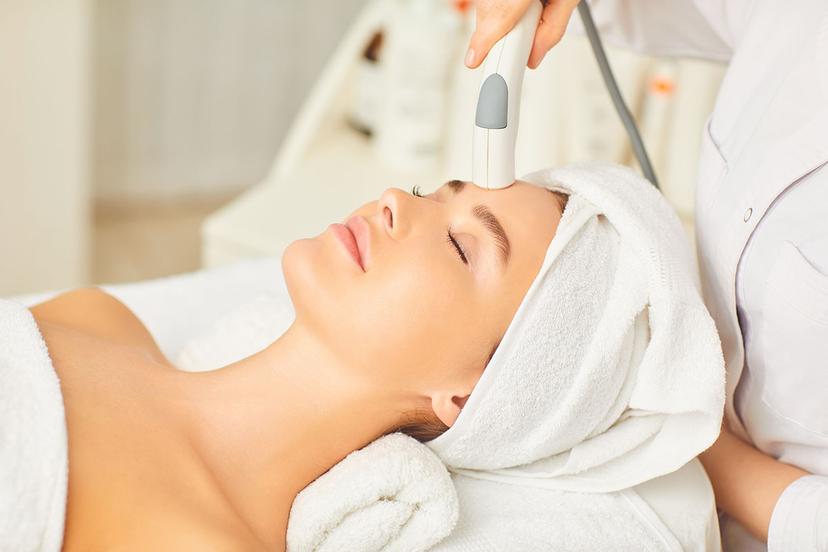Cosmetology

Industry Outlook
Do an Internet search for "Beauty Salons and Services" in your town or area and you'll see how much the industry is growing. You're likely to find a long list of salons in your area. Day spas are also opening up across the country, and salons are expanding to include more spa services like body wraps and massage. Hotels and resorts are adding salons, spas, and fitness centers to their facilities. Cruise lines also hire beauty professionals to provide these services to their guests. Men are also frequent clients of spas and salons, some of which cater to them exclusively. Many skin care lines carry products for men, and cosmetic surgery is gaining wider acceptance among both men and women.
Those in the cosmetology industry, through such professional organizations as the National Accrediting Commission of Career Arts and Sciences (NACCAS), are making efforts to educate people about the varied career options within the industry. Due to the growing number of salons and the mobility within the industry, cosmetology associations are actively recruiting people to meet the industry's high demand for workers. The research group IBISWorld indicated that the beauty industry achieved annual growth of 2.2 percent from 2014 to 2019. Higher levels of discretionary income had boded well for service providers, who were becoming part of the industry in growing numbers thanks to ease of entry and stable profit margins. IBISWorld reported that there were nearly 1.3 million salon and spa establishments in the United States in 2019, which generated an estimated $61.4 billion in revenue.
The U.S. Department of Labor (DOL) projects faster than average growth for barbers, hairdressers, cosmetologists, and shampooers through 2028, at 8 percent. According to the DOL, the increasing population and rising popularity of hair coloring and straightening, and other advanced treatments will create more opportunities for barbers, hairstylists, and cosmetologists. Many of the job openings will also be created by workers who are retiring, entering another profession, or leaving for other reasons.
The outlook is the same for cosmetologists who focus on nail care. The DOL says the number of jobs in this sector of the industry will increase by 10 percent through 2028. This rate is created by the demand for new nail services, says the DOL, such as mini sessions (faster manicures at a reduced price), mobile treatments, and others. The DOL says most job openings will be created by new nail salons opening, as well as filling jobs that open after workers retire or leave the industry.
The branch of cosmetology with the brightest outlook is skin care. According to the DOL, the number of skin care jobs will experience the highest growth rate, at 11 percent through 2028. The much faster than average demand for skin care workers stems from new services being offered, according to the DOL. For example, many companies are offering mini sessions (facials that take less time and cost less) and mobile service, where the skin care worker travels to the client's location, whether that is home or work. More people are interested in better grooming for improved health and well-being, so this will increase demand for skin care specialists in the coming years.
As in other industries, cosmetology was affected by technology at the end of the decade. For example, a growing number of consumers were using mobile technology to pay for services provided by both independent practitioners and large salons. Additionally, software was being adopted by many providers to make operations easier in areas such as appointment scheduling, planning, and marketing. Many software applications were cloud-based, which made it easy to access information anywhere, and across multiple locations. The firm, Research and Markets, forecast growth of 7.11 percent for the global spa and salon software market between 2019 and 2024. Regis Corporation, which either owned or had a stake in nearly 8,000 salon locations worldwide, was a good example of how technology was being used by an industry leader. In 2019, the company established a partnership with Google, making it possible for customers to schedule salon services directly using Google Search and Google Maps, which connected to its proprietary Opensalon system.
The beauty industry, resilient in its profitability even during the 2008 financial crisis, found much more trouble sustaining itself during the 2020 coronavirus pandemic. As of July 2020, spending on cosmetics was down 9.9 percent since the beginning of the outbreak. Many small businesses, such as salons and beauty parlors, closed at the height of the pandemic due to restrictions on being in close proximity to customers. Inevitably, some of the small business won't reopen. By the summer of 2020, these businesses returned to work, offering services on a limited capacity and often by appointment. Workers and clients were required to observe strict guidelines regarding wearing facial masks and keeping socially distant from other customers and employees. But many customers concerned about the COVID risk turned to home beauty products instead of professional services.
In the United States, cosmetology and beauty schools accounted for $2 billion in revenue, with total employment of nearly 20,000 people in 2020. As the pandemic becomes contained and the economy strengthens, the cosmetology and beauty schools sector will grow somewhat through 2025. Concerns about health and hygiene will remain, however, which may limit consumer demand for beauty services in the next few years, according to the research group IBISWorld. Consumers with expendable income will be able to spend money on beauty services and add-on treatments, including deluxe manicures and pedicures, facials, massages, and hair-modification treatments including coloring and permanent hair straightening. Enrollment in cosmetology and beauty schools will increase to keep up with the growing demand for beauty professionals. In addition, another research group, Bair, reports that consumers' interest in maintaining their skin has grown during the pandemic and this trend is expected to continue in the immediate future. Cosmetologists that specialize in skin care will be in demand.
